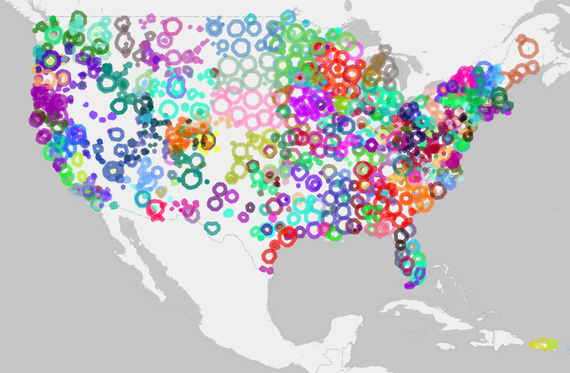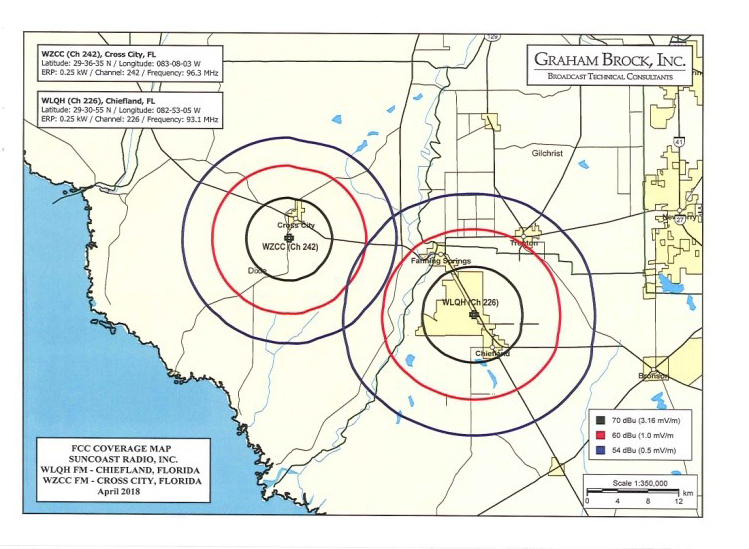Country Radio Coverage: Exploring the Maximum Range of a Radio Station
Hitting the Edge of the Signal
The radio station was located somewhere near the center of its broadcasting range. With a coverage radius of 100 miles, long-distance country music listeners could potentially travel up to 200 miles—the full diameter of the signal coverage area—before the signal started to fade out. If driving directly across this diameter at a steady speed of 40 miles per hour, it would take exactly 5 hours to go from one edge of the coverage area to the other. While some dedicated avid country music fans may want to push their endurance to listen for the full 5 hours of the journey, most people would probably get tired of country hits and stories of small towns long before reaching the very edge of the station’s signal strength. Then there’s also the danger of potentially crashing into the transmitting tower itself if following the diameter path directly! For safety and enjoyment, casual country music listeners would be better off stopping well before the estimated 5 hour mark.

Calculating Coverage for Radio Station Planning
When radio station owners and engineers plan out a new broadcasting facility, carefully calculating the potential signal coverage area is an important part of the process. Factors like the transmission power of the antennas, broadcast frequency, and surrounding terrain are analyzed to estimate the radius that the signal could reliably reach. Having a good understanding of radio signal propagation allows them to determine the approximate population within range of being able to listen. This in turn provides useful information for selling advertising spots to local businesses trying to reach customers in that region. It also helps the station decide what type of programming makes the most sense based on the predicted demographics of radio listeners within the signal coverage zone. Proper estimation of maximum range is important for effectively serving the target listening audience.
Variances from Ideal Range Calculations
Of course, real world conditions often cause actual signal coverage to vary somewhat from theoretical calculations. Natural and man-made obstacles can weaken RF propagation, while anomalous conditions may occasionally allow breakthroughs beyond expected limits. Tall mountains or dense forests may reduce the true radius below the planned range, while atmospherics or temperature inversions could potentially extend it farther under rare scenarios. For most outdoor radio listeners, the assumed coverage area still provides reasonable guidance on where a station’s broadcast could reliably be accessed. But tuners located in basements, factory buildings or other shielded structures may lose reception closer to center than the theoretical edge. And mobile listeners traveling in varied terrains and weather are likely to notice fluctuations in signal strength not fully captured even by detailed propagation modeling. There are always practical variances complicating neat theoretical radio coverage circles.
Community Impact of Local Radio Stations
Beyond just broadcasting commercials and playlists, local radio personalities often form deep bonds with listeners in their signal areas. Familiar voices on the AM/FM dial provide a sense of companionship for many residents, from driving commutes to household chores. Losing access to familiar stations due to a frequency change or transmission upgrade can feel like losing touch with friends. The cultural role of radio also becomes more pronounced in isolated regions with sparse cell service or internet access. Rural listeners rely on their local stations for everything from weather and road alerts to local event announcements and high school sports updates. Losing that community touchpoint could increase the feeling of being disconnected from the broader region. When broadcast engineers design upgrades, thoughtful consideration of these social impacts helps maintain crucial local radio connections.
Regulatory Limits on Station Modifications
Any substantial modifications made to radio broadcast facilities, such as changes in operating power, frequency, or transmission location, typically require prior approval from regulatory agencies like the Federal Communications Commission (FCC) in the United States. This is because such alterations could cause interference to other stations if not properly coordinated. The FCC approval process involves demonstrating that a proposal will not exceed predetermined thresholds for signal overlap into nearby frequency allotments. It also evaluates if upgrades will leave adequate signal availability for listeners relying on the station. Only when thorough technical studies validate no harmful encroachments will modifications be authorized, protecting the stability of station coverage areas people depend on. Proper regulatory compliance is necessary when updating aged infrastructure to maintain continued service to loyal audiences, while still respecting usage rules for shared public airwaves. Without such controls, interference squabbles between stations could disrupt radio access for entire communities.
Traveling the Full Diameter of a Radio Signal
The initial scenario proposed traveling 200 miles—the full diameter distance—within the 100-mile radius coverage of a hypothetical radio station to see how long it would take before the signal faded out entirely. While purposefully pushing reception to the extreme boundaries for the full estimated 5 hours isn’t a realistic usage case, the example provides an interesting thought experiment.
It demonstrates how precisely radio propagation mathematics can model signal strength fall-off over distances. It also shows the value of coverage area calculations for station planning purposes. Even casual listeners can gain a better intuitive understanding of a station’s reach from visualizing what might happen if traversing the whole theoretical limit range from one side to the other. The full diameter journey remains more a mental exercise than a practical radio listening test most will undertake!
